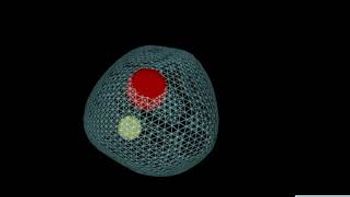
Castration Resistance Monitoring in Prostrate Cancer
Episodes in this series

[Transcript]
Raoul S. Concepcion, MD, FACS: 2020 begins another exciting year in the field of genitourinary oncology, especially in prostate cancer, where we’ve made significant progress with several recent FDA approvals. I am joined by a panel of my colleagues, all experts in the management of advanced prostate cancer.
Today we are going to highlight recent clinical data and discuss practical implications for patient care.
I am Raoul Concepcion and the director of The Comprehensive Prostate Center, as well as a clinical associate professor of urology at Vanderbilt University School of Medicine in Nashville, Tennessee.
I am joined by Dr Jahan Aghalar, a genitourinary medical oncologist at New York Cancer and Blood Specialists in New York City;
Dr Gordon Brown, the director of the New Jersey Urology Center for Advanced Therapeutics, and the medical director of robotic surgery at Thomas Jefferson Hospitals in New Jersey;
Dr Jorge Garcia, the Kerscher Family Chair for Clinical Prostate Cancer Research and a staff physician in the Department of Hematology and Oncology and Urology at the Cleveland Clinic in Cleveland, Ohio;
And Dr Paul Sieber, urologist in private practice in Lancaster, Pennsylvania. He also serves as president and medical director of research at Lancaster Urology.
Gentlemen, thank you so much and let’s begin.
I think as we move forward, we’ve always thought of prostate cancer, especially for the urologists here on the panel…we’ve either looked at it as local or metastatic. And there have been certain cut points, if you will, where the urologists have historically taken care of the diagnosis management for localized disease, and then certainly once patients have progressed beyond androgen deprivation therapy [ADT], historically pre-2010, the medical oncologists with very limited resources obviously were involved in metastatic disease. And as we all know, prostate cancer, especially the generic term, advanced prostate cancer, has really come a long way. In my opinion, we need to start looking at our prostate cancer patients mostly in terms of buckets, if you will. I’m a believer that when we talk about advanced prostate cancer, there’s probably 4 buckets that I want to discuss as part of this segment today.
First, is the nonmetastatic castration-sensitive prostate cancer patient. I think, by definition, those are the patients who have been definitively treated, whether that be with radiation therapy or surgery, who have gone on to have a biochemical recurrence. Then this ever-larger population is the metastatic castration-sensitive prostate cancer patient, which again now there are new changes in how those patients are being managed. Then the nonmetastatic castration-resistant prostate cancer, and then finally this bigger bucket where we’ve spent a lot of time over the past decade discussing is the metastatic castration-resistant prostate cancer.
I think to start this discussion, let’s first, again addressing these individual patients as separate entities. And I think it’s important to do that primarily because the trials and the treatment regimens are all very different. Let’s first talk about this patient who has historically been called biochemically recurrent or again nonmetastatic castration-sensitive prostate cancer. So basically, Gordon, this is where the urologists have always been in play very early on. Give us a little bit of your insight, how you tend to manage these patients once you identify a biochemical recurrence, what do those values look like, that type of thing.
Gordon Brown, MD: Sure. Historically, we’ve probably, as urologists, been over treating patients with the use of ADT therapy for a variety of reasons. Historically, we’ve done this because of the lack of good alternatives, patient anxiety, and concern around progression of disease. However, we’ve taken a little bit of a closer look in terms of our approach to ADT therapy, certainly within the last 5 to 10 years. And really in the absence of good data suggesting a clinical benefit to the use of ADT in the nonmetastatic patient population, we’ve really tried to risk stratify who gets ADT versus who doesn’t in our biochemically recurrent patient population. So Raoul, what we’ve tried to do is look at those patients we deem to be at highest risk of progression over time to development of metastases, specifically those patients who have failure within 3 years of primary therapy, those patients who have Gleason score group 4 or higher type disease, or those patients who have PSA [prostate-specific antigen] doubling times inside 10 months. Those patients, upon identification of biochemical recurrence, are started on an ADT regimen within our practice.
Raoul S. Concepcion, MD, FACS: You’re talking basically, in your big practice in New Jersey, are you primarily using LHRH [luteinizing hormone-releasing hormone] analogues? Do you go to complete androgen blockade?
Gordon Brown, MD: Our initial approach usually is the GnRH [gonadotropin-releasing hormone] antagonists as an initial starting therapy for these patients with biochemical recurrence. And then after 2 doses transition on to LHRH agonist therapy for their maintenance doses. We monitor these patients with a baseline testosterone prior to initiation of therapy and usually also check their testosterone within 4 months of initiation of therapy to ensure castrate levels of serum testosterone.
Raoul S. Concepcion, MD, FACS: Segueing from that, let’s talk a little bit about, because we know the goal is for testosterone suppression, get it to that “castration level.” So, Jorge, give us the background on castration levels. What’s the current definition? Where should we be going, those types of things?
Jorge Garcia, MD: I think that’s a great question, and it actually reflects on what you, Gordon, stated earlier. I think there are not great data to suggest that a testosterone level of 50, 40, 30, or 20 ng/dL is better than the next level. The standard guideline for us really is castration levels, and castration levels traditionally have been defined by a testosterone level under 50 ng/dL, period. Now, the Europeans and certainly some of the new guidelines in the United States would suggest that the lower your testosterone, the better for you with regard to outcome. But there are no prospective data comparing a level of less than 50 or less than 20 ng/dL. I would argue that there are pockets of practitioners within the United States who would say the lower the better, maybe you want to have under 12 or under 20 ng/dL. We use a supersensitive assay at the Cleveland Clinic, so we can detect levels of testosterone less than 12.
Contrary to you, to some extent, in my practice, I do not repeat and/or check testosterone levels in my patients because the likelihood of you having a primary resistant patient, if you will, to ADT whether you use LHRH agonist or antagonist therapies, is low. For younger men, maybe that would be intriguing to do, especially when you see patients who may not be able to achieve undetectability of their PSA values, but I traditionally do not follow testosterone for those patients.
Now, I think it’s important also to remind ourselves that when you look at testosterone baseline, I think that’s relevant for us. Because if you take a bracket of patients in their 70s or 80s developing rising PSA or above chemical recurrence after local definitive therapy, a significant proportion of those men may in fact be hypogonadal, raising the question as to well, could they really be castration resistant from the get-go or not? I don’t think we know that yet.
And importantly as well is when you have received local definitive therapy with radiotherapy specifically, especially if you have done ADT and radiation for high-risk patients, it is imperative that you follow testosterone because you want to know when testosterone recovers, so you know if the patients are having a rising PSA, you want to ensure then that testosterone has recovered because if not, those patients are castration resistant from the get-go. And also, important to follow testosterone levels in patients who are doing intermittent therapy, that is periods on suppression and periods off therapy. Because you always want to pay attention to when testosterone recovers for those patients and what happens with the PSA over time once testosterone recovers.
Raoul S. Concepcion, MD, FACS: So, you do check a testosterone level pre-institution of ADT.
Jorge Garcia, MD: Yes.
Raoul S. Concepcion, MD, FACS: Paul, do you do that?
Paul Sieber, MD: Yes, routinely.
Raoul S. Concepcion, MD, FACS: Jahan?
Jahan Aghalar, MD: Yes, I would routinely do that as well, again to the points that Jorge very finely pointed out, to have a better idea as to whether a patient up front may already have some signal that they may be portending castration-resistant disease.
Panelists:
- Raoul Concepcion, MD, FACS, Vanderbilt University School of Medicine, Nashville, Tennessee
- Jahan Aghalar, MD, Board-certified Hematologist and Oncologist, New York, New York
- Gordon Brown, MD, Rowan University School of Osteopathic Medicine, Glassboro, New Jersey
- Jorge Garcia, MD, Cleveland Clinic, Cleveland, Ohio; Jonathan Henderson, MD, Regional Urologist, Shreveport, Louisiana
- Paul Sieber, MD, Penn Medicine Lancaster General Hospital, WellSpan Ephrata Community Hospital, Lancaster, Pennsylvania
Newsletter
Stay current with the latest urology news and practice-changing insights — sign up now for the essential updates every urologist needs.
































